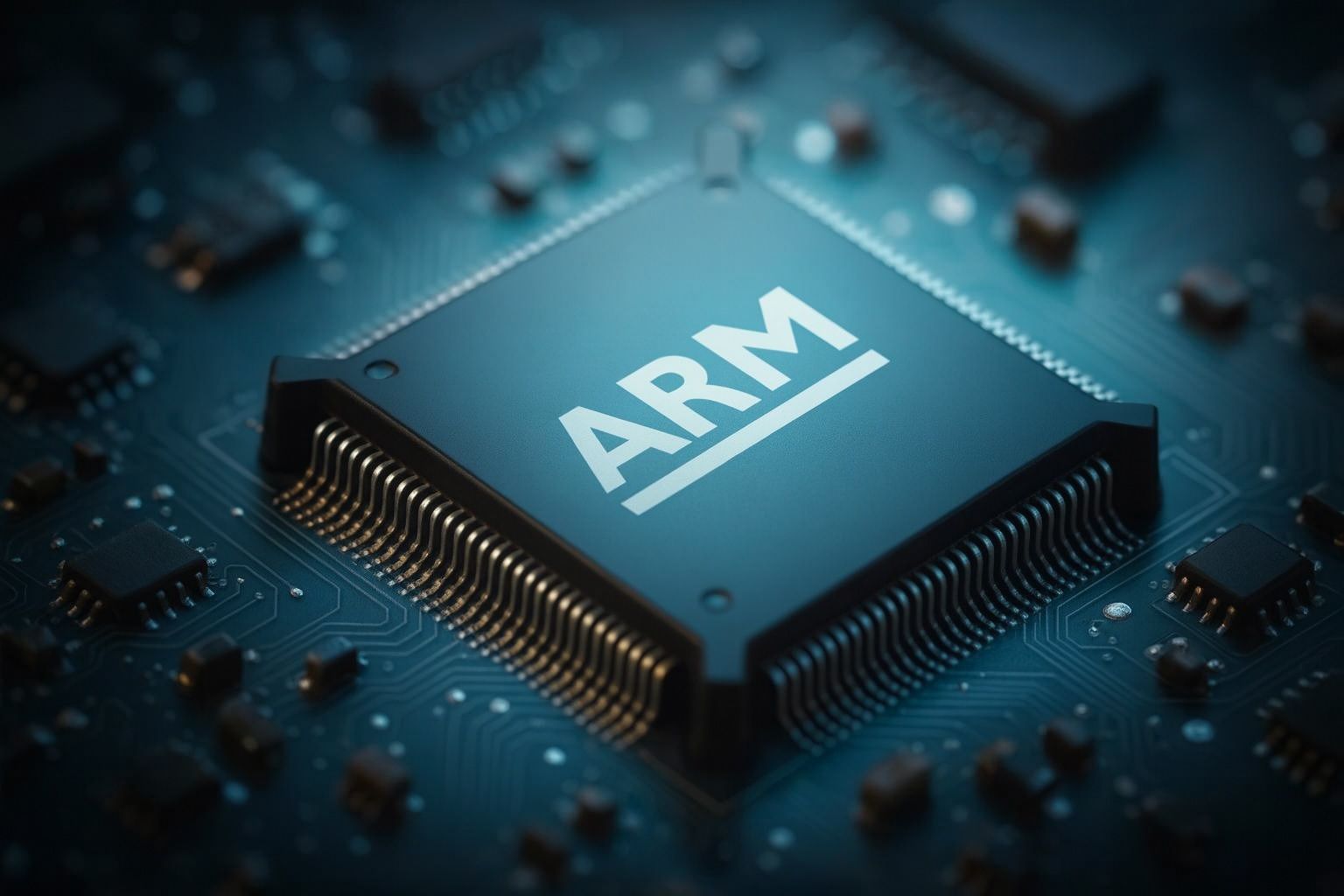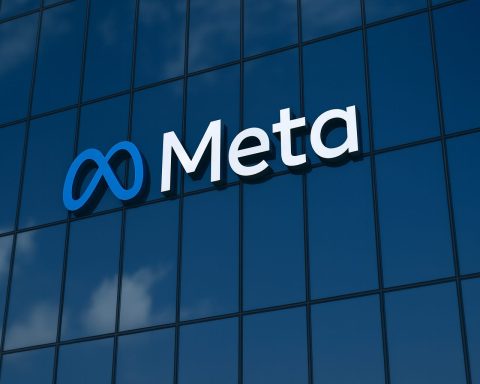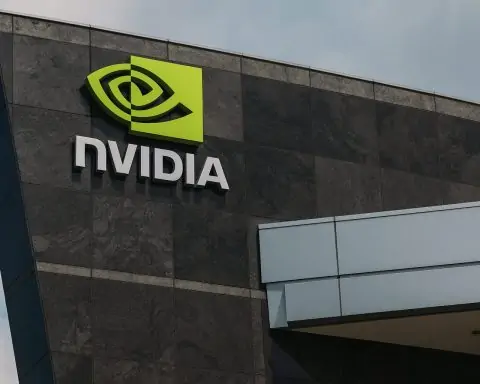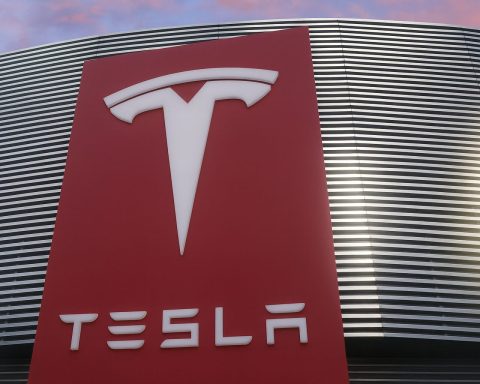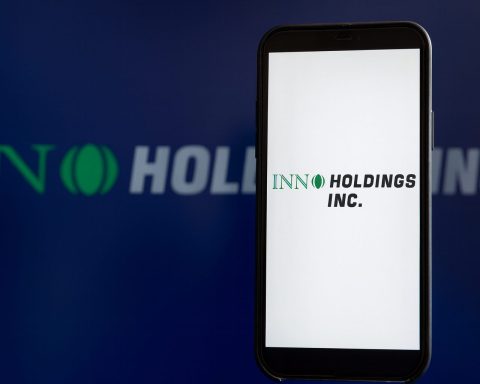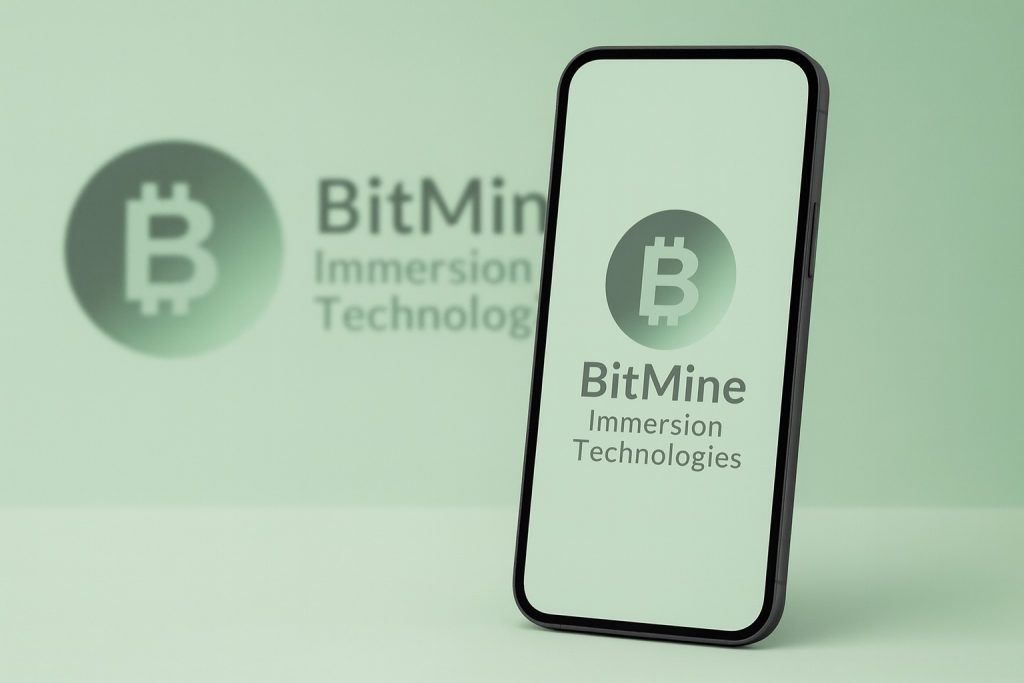- ARM stock near highs: Arm Holdings plc (NASDAQ: ARM) shares closed around $170.68 on Friday, capping a weekly gain of ~2.5% [1]. The stock has surged over 34% year-to-date amid 2025’s AI-driven tech rally [2].
- Analysts upbeat but wary: Wells Fargo issued a $190 price target this week [3], and TD Cowen upped its target to $175 with a Buy rating [4]. Consensus on Wall Street is a “Moderate Buy” with an average target near $168 [5], as experts laud Arm’s growth prospects but note its lofty valuation (P/E ~259) [6] [7].
- New AI partnerships: Arm is expanding its footprint in artificial intelligence. It partnered with Meta Platforms to power AI recommendation systems for Facebook and Instagram [8], and expanded its AI chip licensing program to attract startups developing on-device AI [9]. Reports also say Arm will help design a CPU for a custom OpenAI chip project with Broadcom [10].
- SoftBank’s big stake: Japanese tech giant SoftBank owns ~90% of Arm, leaving only ~10% of shares on the public market – a tiny float that fuels volatility [11]. SoftBank is reportedly seeking a $5 billion loan using Arm stock as collateral to fund further AI investments (like OpenAI) [12], underlining its confidence in Arm’s future.
- Outlook and AI race: Arm reports earnings on Nov. 5, with analysts expecting ~26% revenue growth (to ~$1.06 billion) and EPS around $0.33 [13]. As the leading designer of mobile chips, Arm is now pushing into data centers, PCs, and automotive AI, competing with Nvidia, Intel and even open-source rival RISC-V [14]. Its success in the AI hardware race – and ability to sustain growth – will be key to justifying the stock’s premium valuation.
ARM Stock Climbs on AI Momentum
Arm’s stock has been on a tear thanks to a flurry of positive news in the semiconductor and AI space. The Cambridge, U.K.-based chip design firm saw its shares jump about 4% on Monday after unveiling an expansion of its licensing program for AI-focused chips [15]. The stock ended the week around $170.68, up roughly 2.5% over five days [16] and hovering near its highest levels since Arm’s blockbuster IPO last year. Up to this Monday’s close, Arm’s stock was up over 34% for 2025 [17] – outpacing many peer semiconductor stocks – as investors bet on its growing role in artificial intelligence.
This latest rally extends a volatile October for Arm. Just two weeks ago, the stock spiked more than 11% in a single day amid reports that OpenAI (maker of ChatGPT) was working with Arm on a new AI chip project [18] and optimism around easing U.S.–China trade tensions. That surge, from the mid-$150s to the $170s, was followed by a brief pullback as traders took profits. But bullish sentiment returned with this week’s AI announcements, keeping Arm’s share price near the $172 level – not far below its record high around $182 [19]. Traders note that Arm’s tiny public float (only ~10% of shares) makes the stock prone to outsized swings on news [20], which has magnified both the jumps and dips in recent sessions.
Analysts: High Hopes and High Valuation
Wall Street analysts are broadly positive on Arm’s prospects, though many urge caution about its rich valuation. In the past few days, Wells Fargo set a $190 price target for Arm – one of the most bullish calls yet [21] – while TD Cowen raised its target from $155 to $175 and reiterated an upbeat rating [22]. Evercore ISI similarly nudged its target up to $178, citing Arm’s strong growth trajectory, and one research firm even upgraded Arm to a “Strong Buy” in recent months [23].
Overall, about two-thirds of covering analysts rate Arm a Buy, and MarketBeat data shows the average 12-month target is ~$168 per share [24]. That’s roughly where the stock trades now, reflecting how quickly Arm’s price has climbed to match optimistic forecasts. Several analysts have mentioned the company’s better-than-expected earnings last quarter (Arm delivered $0.35 EPS on $1.05 billion revenue, up 12% year-on-year) as a sign of execution [25] [26].
However, valuation is a sticking point. At ~$170 per share, Arm’s market capitalization is around $180 billion and its price-to-earnings ratio tops 250 [27] – far higher than industry peers like Nvidia (which trades around 60–70× forward earnings) [28]. Morningstar and others note that this lofty P/E “reflects expectations of a sustained AI-driven growth cycle” [29]. In other words, investors are pricing Arm like an AI powerhouse, so any stumble could spark a correction. “ARM trades at more than 200 times earnings,” one analysis warned, “implying sky-high growth baked in” [30]. Some analysts have recently trimmed their ratings or targets on Arm, citing these valuation concerns and the fact that much of Arm’s current revenue still comes from smartphones – a mature market [31] [32].
For now, though, the Street’s sentiment remains optimistic. Arm’s unique IP business model (it licenses chip designs rather than manufacturing chips) yields fat profit margins and a steady royalty stream, and many analysts see long runway for growth as Arm expands into new areas. Consensus forecasts envision roughly 20% annual revenue growth through 2028 [33], which would have Arm nearly doubling sales in the next 3–5 years. That kind of growth, if achieved, could eventually “grow into” the valuation – but any shortfall, especially in the hotly competitive AI arena, would be harshly punished by the market.
Big Tech Partnerships Drive AI Ambitions
Several major developments in the past week underscore Arm’s push to the forefront of AI hardware. On October 15, Meta Platforms (META) announced it is partnering with Arm Holdings to power the AI-driven recommendation engines across Meta’s social networks [34]. In practice, Meta will deploy Arm-based chips in its data centers to handle personalization and content recommendations for Facebook and Instagram users [35]. This is a high-profile win for Arm: the social media giant chose Arm’s semiconductor architecture over the x86 chips from Intel or AMD that traditionally dominate in servers. Meta cited performance and power efficiency gains, with Arm-based systems promising higher performance per watt – a crucial advantage for massive AI workloads [36]. The Meta deal “marks another major validation of Arm’s technology” as it challenges Intel’s incumbency in the data center [37]. Investors welcomed the news, seeing it as proof that Arm’s designs can compete at the highest levels of computing and AI.
Then on October 20, Arm revealed an initiative aimed at widening its reach among AI startups. The company is expanding its “Flexible Access” licensing program to cover the latest Armv9 architecture for edge AI [38]. This program, which previously let small chip designers experiment with certain Arm IP at low or no cost, will now include Arm’s cutting-edge AI-capable designs. The goal is to “lower entry barriers” for start-ups building AI chips and accelerate their design cycles [39]. By opening more of its chip blueprints to emerging players, Arm hopes to embed its technology in the next generation of AI devices – from smart sensors to robotics – and cultivate future royalty-paying customers. The importance of this strategy is clear: “Opening up the licensing program strengthens Arm’s ties with AI startups… positioning Arm to embed its tech across emerging AI devices,” Reuters noted [40]. The market reacted positively; Arm’s stock rose about 4% to $172.23 on the day of the announcement [41], as investors interpreted it as a savvy move to secure long-term growth in the AI era.
Arm may also have a hand in one of the most buzzed-about AI projects. The Information reported (and Reuters subsequently cited) that OpenAI is collaborating with Arm and Broadcom to develop a custom AI chip for OpenAI’s computing needs [42]. In this arrangement, OpenAI would design specialized AI processors (with Broadcom manufacturing them), and Arm would provide the CPU design – essentially the general-purpose brain – to integrate into the system [43]. This unconfirmed project (neither company has officially announced it) nonetheless triggered excitement around Arm. When the news hit in mid-October, Arm’s stock surged about 11% intraday [44] as traders piled in, betting that Arm’s involvement in OpenAI’s chip initiative could open a lucrative new frontier. Such a role would position Arm silicon at the core of advanced AI data centers, alongside GPUs and accelerators, and reinforce Arm’s image as a key enabler of the AI boom.
Meanwhile, Arm continues to notch wins with existing customers. Earlier this month, Qualcomm – one of the world’s largest mobile chipmakers – unveiled new processors built on Arm’s latest architecture (Armv9) [45]. Qualcomm’s decision to shift its flagship Snapdragon chips to Armv9 (revealed on Oct. 1) was seen as a vote of confidence in Arm’s technology. Newer Arm designs carry higher royalty rates, so this boosts Arm’s revenue per chip and showcases its continued “entrenched” position in mobile and edge AI [46]. Arm’s stock “jumped ~5%” on that announcement [47]. Even in the midst of a legal spat between the two companies (more on that next), Qualcomm is deepening its technical ties with Arm – a reminder that Arm’s IP remains foundational to mobile computing. In fact, Arm-based chips account for “a large portion of the world’s smartphones” and are quickly gaining ground in PCs and servers as well [48].
Legal Battle and SoftBank’s Influence
Not all news has been positive. Arm is navigating an ongoing legal battle with Qualcomm that has cast a shadow over their relationship. In early October, Arm said it plans to appeal a U.S. court ruling in a high-stakes licensing dispute against Qualcomm [49]. The dispute centers on Qualcomm’s acquisition of Nuvia, a startup developing Arm-based chips; Arm argued that Qualcomm needed a fresh license for Nuvia’s use of Arm’s designs, but a judge disagreed and left Qualcomm’s jury trial victory intact [50]. Arm is now asking a higher court to overturn that outcome. The lawsuit has little immediate impact on shipments, but it poses a “headline risk” [51] and underscores tensions with a key customer – even as, ironically, Qualcomm is adopting Arm’s latest tech in its products. Both companies have strong incentives to resolve the conflict, but for now the legal overhang remains an uncertainty for Arm’s investors.
Another factor influencing Arm’s stock is the outsized role of its majority owner, SoftBank Group. The Japanese tech conglomerate owns roughly 90% of Arm’s shares, after taking the company public last year but retaining most of the equity. This leaves only about 10% of Arm’s stock available in public trading, a small float that amplifies price volatility [52]. Masayoshi Son, SoftBank’s CEO, has been unabashed about his bullish view on Arm and AI – and he’s backing that conviction with financial maneuvers. According to Bloomberg and Reuters, SoftBank is in talks to borrow $5 billion from banks in the form of a margin loan secured by its Arm shares [53]. The capital raised is earmarked for further investments in AI ventures, including a deeper stake in OpenAI [54]. Essentially, SoftBank is leveraging Arm’s high stock value to fuel new bets in the AI realm.
For Arm shareholders, SoftBank’s actions are a double-edged sword. On one hand, SoftBank’s willingness to use Arm as collateral highlights its confidence in Arm’s value and future prospects (SoftBank famously calls Arm the “crown jewel” of its portfolio). On the other hand, the tiny float means Arm’s share price can swing wildly with shifts in sentiment. When optimism is running high – such as after the OpenAI chip news – the stock can jump dramatically in a short span [55]. Conversely, any hint of trouble can spark an outsized sell-off (for example, Arm dropped over 8% in a single session back in July when its earnings outlook disappointed and it revealed plans to invest heavily in its own chips [56]). This volatility is likely to continue as long as SoftBank holds most shares off the market. Investors are keenly aware that SoftBank could eventually sell more Arm stock (via secondary offerings) to realize gains or raise cash, though SoftBank has given no immediate indication of such plans. For now, the tight float and SoftBank’s maneuvers are simply part of the landscape for Arm – adding another layer of intrigue to an already closely watched stock.
Outlook: Earnings on Tap and the AI Hardware Race
Looking ahead, Arm faces a pivotal test on November 5, when it will announce earnings for the quarter ended September 30. This will be only the second full quarter reported since Arm’s IPO, and investors are eager for an update on both its financial performance and guidance. Analysts expect solid growth: consensus estimates predict Arm’s fiscal Q2 revenue will rise about 26% year-over-year to roughly $1.06 billion, with adjusted earnings per share climbing to around $0.33 (up from $0.30 a year ago) [57]. Any result in that ballpark would underscore that Arm’s royalty-focused business is benefiting from the continued adoption of its newer chip designs – especially in smartphones, data centers, and IoT devices. Particular focus will be on royalty revenues from mobile chips, which had shown signs of softness due to global smartphone weakness, versus growth in newer areas like data-center and automotive royalties. “Smartphone royalties remain soft… but cloud-server and AI accelerator design wins keep the royalty treadmill humming,” noted Michael Schulman of Running Point Capital, highlighting how Arm’s newer market wins are offsetting handset lulls [58]. If Arm can demonstrate that kind of balance – sustained double-digit growth despite a sluggish phone market – it will reinforce the bullish narrative behind its stock.
Beyond the numbers, Arm’s executives will likely provide updates on key strategic initiatives, from its AI-focused product roadmaps (e.g. the new “Lumex” AI chip designs for mobile devices [59]) to any progress on forging deeper partnerships in cloud computing. Investors will listen for commentary on how the Meta partnership and Flexible Access expansion might translate into revenue in 2026 and beyond. Any color on the OpenAI/Broadcom collaboration (even if indirect) could also be a catalyst. Additionally, with the Qualcomm legal appeal underway, management may address how they plan to navigate that relationship; Qualcomm remains a critical customer, so Arm will want to reassure stakeholders that business with Qualcomm continues “as usual” despite courtroom clashes.
Stepping back, Arm’s role in the semiconductor industry is more pivotal than ever. The company’s chip architectures power virtually all of the world’s smartphones and a huge array of tablets, IoT gadgets, and embedded electronics [60]. Now Arm is pushing further into data center servers and PCs, aiming to challenge the dominance of Intel’s x86 chips in those domains [61]. Importantly, Arm’s low-power, high-efficiency designs are highly attractive for AI at the edge – running AI algorithms on devices like phones, drones, or AR glasses, rather than in cloud servers. This is an exploding market, and Arm’s latest moves (like the Armv9 architecture and partnerships with firms like Meta and NVIDIA for data center CPUs [62]) indicate it wants a central seat in the next wave of AI hardware. In the “AI arms race”, Arm isn’t building the flashy graphics processors or accelerator cards – but it is providing the fundamental blueprints (CPU cores) that many of those advanced chips rely on.
That said, competition is intensifying. Nvidia, AMD, and Intel are all embedding more AI capabilities into their chips, encroaching on territory where Arm’s partners operate. Additionally, an open-source alternative called RISC-V has been gaining momentum as a potential rival architecture. While RISC-V is still “far behind Arm in maturity and ecosystem”, it has the backing of major firms (and some geopolitical support, as China looks to reduce dependence on Western tech). Arm will need to continue innovating – and keep its vast base of licensees satisfied – to fend off these challenges. Notably, Arm’s recent flirtation with designing its own chips (rather than only licensing designs) has raised eyebrows; some observers worry that if Arm starts making chips, it could alienate its customers who currently license its IP [63]. Arm’s leadership has downplayed this risk, describing any in-house chip prototypes as just a way to showcase its technology, not compete with clients. Still, it’s an area to watch as the company evolves in the AI era.
In summary, Arm enters late 2025 as a key player at the intersection of tech’s biggest trends: mobile computing, cloud infrastructure, and artificial intelligence. Its stock’s strong run reflects confidence that Arm’s “architecture Arm-y” – spanning smartphones to supercomputers – will secure a growing share of the value in an AI-driven world. The coming earnings report and subsequent quarters will be crucial for Arm to prove it can deliver the growth to match the hype. For now, market sentiment is cautiously optimistic [64]. As one fund manager said during Arm’s IPO, “the AI theme is alive and kicking” [65] – and Arm is clearly intent on being at the heart of that theme. Investors will be watching closely to see if the company can execute on its promises and maintain its leadership as the global chip industry’s undisputed royalty king in more ways than one.
Sources: Reuters [66] [67] [68] [69] [70]; MarketBeat [71] [72] [73]; ts2.tech (TechStock²) [74] [75] [76]; Nasdaq/Motley Fool [77] [78]; StockTitan [79].
References
1. www.marketbeat.com, 2. www.reuters.com, 3. www.quiverquant.com, 4. www.marketbeat.com, 5. www.marketbeat.com, 6. www.marketbeat.com, 7. ts2.tech, 8. www.reuters.com, 9. www.reuters.com, 10. www.nasdaq.com, 11. ts2.tech, 12. www.reuters.com, 13. www.nasdaq.com, 14. www.reuters.com, 15. www.reuters.com, 16. www.marketbeat.com, 17. www.reuters.com, 18. ts2.tech, 19. ts2.tech, 20. ts2.tech, 21. www.quiverquant.com, 22. www.marketbeat.com, 23. www.marketbeat.com, 24. www.marketbeat.com, 25. www.marketbeat.com, 26. www.marketbeat.com, 27. www.marketbeat.com, 28. ts2.tech, 29. ts2.tech, 30. ts2.tech, 31. ts2.tech, 32. ts2.tech, 33. ts2.tech, 34. www.reuters.com, 35. www.reuters.com, 36. www.reuters.com, 37. www.reuters.com, 38. www.reuters.com, 39. www.reuters.com, 40. www.reuters.com, 41. www.reuters.com, 42. www.nasdaq.com, 43. www.nasdaq.com, 44. ts2.tech, 45. ts2.tech, 46. ts2.tech, 47. ts2.tech, 48. www.reuters.com, 49. www.reuters.com, 50. www.reuters.com, 51. ts2.tech, 52. ts2.tech, 53. www.reuters.com, 54. www.reuters.com, 55. ts2.tech, 56. www.reuters.com, 57. www.nasdaq.com, 58. ts2.tech, 59. ts2.tech, 60. www.reuters.com, 61. www.reuters.com, 62. ts2.tech, 63. ts2.tech, 64. ts2.tech, 65. ts2.tech, 66. www.reuters.com, 67. www.reuters.com, 68. www.reuters.com, 69. www.reuters.com, 70. www.reuters.com, 71. www.marketbeat.com, 72. www.marketbeat.com, 73. www.marketbeat.com, 74. ts2.tech, 75. ts2.tech, 76. ts2.tech, 77. www.nasdaq.com, 78. www.nasdaq.com, 79. www.marketbeat.com
